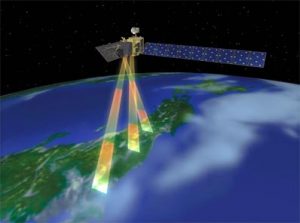The Indian Space Research Organisation (ISRO) is planning to launch a full-fledged niche Earth observation (EO) satellite called the Hyperspectral Imaging Satellite or HySIS using a critical chip called optical imaging detector array it has developed.
About Hyperspectral imaging:
Hyperspectral or hyspex imaging is considered to be an EO trend that is being experimented globall An EO expert called it equivalent to ‘CATSCAN’ of Earth from space.
- Hyspex adds a new dimension to simple optical imagers, which can be used for a range of activities including monitoring the environment, crops, looking for oil and minerals and even for military surveillance. All these activities need images that show a high level of differentiation of the object or scene.
- ‘Hyspex’ imaging is said to enable distinct identification of objects, materials or processes on Earth by reading the spectrum for each pixel of a scene from space.
- ISRO first tried it out in an 83-kg IMS-1 experimental satellite in May 2008. The
 same year, a hyperspectral camera was put on Chandrayaan-1 and used to map lunar mineral resources.
same year, a hyperspectral camera was put on Chandrayaan-1 and used to map lunar mineral resources. - A German environmental satellite called EnMAP capable of hyperspectral imaging is due to be launched on an Indian booster in 2018.
- The optical imaging detector array chip has been made at ISRO’s electronics arm, the Semi-Conductor Laboratory, Chandigarh and its architecture has been designed by Space Applications Centre, Ahmedabad.
- ISRO is thus endeavouring to enter the domain of operational hyperspectral imaging from earth orbit with a satellite that can see in 55 spectral or colour bands from 630 km above ground.
Quick Facts about ISRO:
ISRO is the space agency of Government of India, formed with a vision to harness space technology for national development
- Formation Year: 1969
- Founded by: Vikram Sarabhai
- Headquarters: Bengaluru
- Current Chairman: A S Kiran Kumar
AffairsCloud Recommends Oliveboard Mock Test
AffairsCloud Ebook - Support Us to Grow
Govt Jobs by Category
Bank Jobs Notification



 same year, a hyperspectral camera was put on Chandrayaan-1 and used to map lunar mineral resources.
same year, a hyperspectral camera was put on Chandrayaan-1 and used to map lunar mineral resources.

